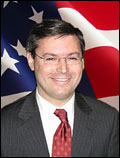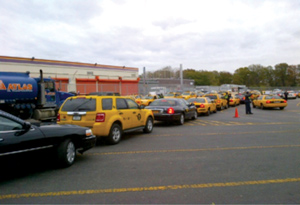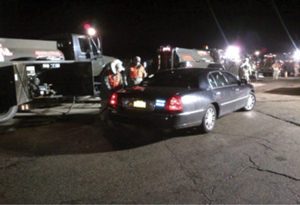 COMMISSIONER’S LETTER
COMMISSIONER’S LETTER COMMISSIONER’S LETTER
COMMISSIONER’S LETTER
By New York City Taxi and Limousine Commission Commissioner/Chairman David Yassky
There is no doubt in anyone’s mind that super storm Sandy was a catastrophe of mammoth proportions for New York City and State, and New Jersey. As of the time of this writing the death toll in our city alone is 43. Tens of thousands were left homeless with thousands of homes decimated by the storm surge or by fire. Simply put, this storm generated so many tragedies that there’s no way to capture the scope of the tragedies in the limited space allotted me here.
The TLC’s regulated industries had its share of tragedies with homes and vehicles lost to industry leaders and drivers alike. As heart wrenching as the tales have been thus far, I am certain that the sheer scale of this cataclysm will provide many more in the months to come. Our thoughts and prayers go out to those hardest hit, like our friend and colleague Darlyn Sanchez of United As One, who lost her home and belongings as did a number of members of her immediate family. I’m grateful to say, however, that she and her family survived their night of horror.
Of course, the challenges to the taxicab and For-Hire Vehicle (FHV) industries were clearly defined. The first challenge, very early on, was how we maximize the capacity of TLC licensed vehicles in the absence of bus and subway service. Mayor Bloomberg’s executive order authorized the TLC to take the bold step of authorizing liveries and other FHVs to accept street hails citywide during the emergency, and instituted a group ride program so that taxis and liveries could keep our city moving.
Another challenge was access. Mayor Bloomberg wisely instituted a High Occupancy Vehicle plan limiting the number of vehicles entering Manhattan to those carrying at least three individuals. Recognizing the value of taxicabs and FHVs in the crisis, they were exempted from HOV3, and played an important role in those most crucial days while the mass transit system regained its footing.
The next challenge was perhaps the most fundamental of all. Taxicabs/FHVs/ambulettes – gasoline = people going nowhere. While the question of whether taxicabs and FHVs are “priority vehicles” that would come just after emergency responders will be pondered at some point in the grand post storm analysis. However, in the short term, the idea was to get our licensees some gas, however possible, and as quickly as possible, and that’s precisely what we did. Between operations at our Woodside Safety & Emissions facility and at Floyd Bennett Field, with the invaluable assistance of our National Guard, we’ve distributed tens of thousands of gallons of gasoline – free of charge – when the gas lines were longest, the stakes were highest, and, I’m sorry to say, when hope was at its lowest.
The last component fell into place when Mayor Bloomberg, again quite wisely, implemented odd/even gas rationing which has effectively done away with the lines and apparent panic that had taken hold of the city when gas was seemingly more scarce and more precious than gold. Here, too, the value of the TLC’s regulated industries was such that they were exempted from the requirement alongside emergency vehicles, MD plates, buses and commercial vehicles.
Going forward, we’ll be distributing information about whatever government assistance is available to those hardest impacted by the storm, and listening to the drivers and their representatives about whatever assistance they may feel is necessary to help them recover.
Of course, the fact that I am writing these words from a borrowed office in our Woodside facility illustrates the fact that the TLC itself was not immune to Sandy’s effects. Our Beaver Street building was among many that were inundated by the storm surge in lower Manhattan, and we have been relocated for some weeks now. Likewise, our Staten Island office was severely impacted, and is closed indefinitely. I am confident, however, that by the time you read these words our Beaver Street headquarters, minus the 19th floor courts now relocated to our Long Island City facility, will be back open for business.
So, the takeaway for me is that, while I believe we’ve made the best of a truly bad situation, there’s clearly more we can do to prepare for such eventualities in the future. In order for us to do this effectively, however, it is absolutely essential that we work with industry partners who are united in the goal of support and recovery. We can do this!
Until next time, be well and safe.
 |
 |
Watch the TLC web site at www.nyc.gov/taxi for updates, or to access monthly medallion price charts.